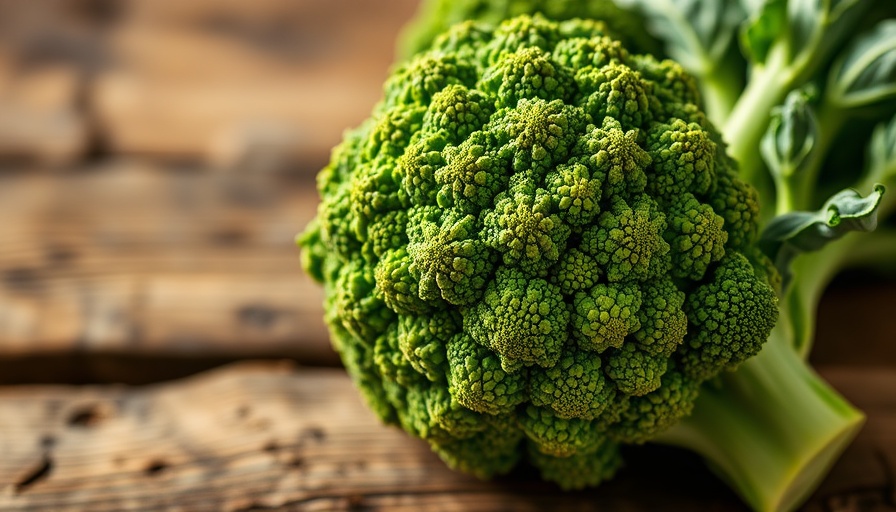
Spring into Gardening: Essential Seeds for a Thriving Year
As the winter months fade and spring begins to blossom, gardening enthusiasts everywhere are eager to kickstart their growing season. Whether you're a seasoned gardener or just dipping your toes into the world of plants, understanding the ins and outs of starting seeds can make a significant impact on your garden's yield and health. In this article, we explore the best practices for seed starting and the exciting varieties you might consider planting this year.
The Joy of Seed Starting
Starting seeds indoors is one of the most rewarding experiences for any gardener. It gives you the opportunity to nurture your plants from the ground up and gain control over your garden's success from the very beginning. Not only does this method enhance the germination rates, but it can also lead to stronger, more developed plants ready to face outdoor challenges.
When starting seeds indoors, it’s essential to gather some key tools: quality seed starter trays, grow lights, and proper potting soil. While it may seem daunting at first, investing in the right equipment will pay off in the long run. The initial costs can be offset by the money saved from not having to purchase nursery plants every season. Moreover, with the right setup, you can cultivate a wide array of plants—from vibrant flowers to delicious vegetables.
Planning Your Garden: When to Start Your Seeds
Timing is critical when it comes to gardening, especially for seed starting. Ideally, you should begin planning your garden based on your region's last frost dates. This information is crucial, as it guides you on when to plant your seeds and ensure their successful transfer to the outdoor garden. A quick tip: use a planting calendar that outlines when to start seeds indoors and when it’s safe to plant them outside.
Different plants have varying germination timelines. For instance, warm-season vegetables like tomatoes and peppers should generally be sown indoors a few weeks prior to your last frost date, while cool-season crops like lettuce can often be sown directly into the ground earlier in the season.
Getting Your Seeds Organized for Success
To ensure a smooth planting process, organization is key. Group your seeds based on when they need to be started—some can be sown indoors while others will flourish better when direct-sown outdoors. Keeping track of your seeds in this way not only helps prevent delays but also ensures that you’re maximizing your growing potential.
Consider using containers that can be reused; old egg cartons or yogurt containers can work well in a pinch. However, investing in good quality seed trays can greatly simplify the transplanting process down the line.
The Best Practices for Seed Germination
Once your seeds are ready to be sown, it’s time to get your hands dirty. Fill your containers with quality potting soil, plant your seeds at the correct depth, and keep the soil moist until germination occurs. The right environment is also crucial; maintain a warm and consistent temperature to encourage growth.
Common challenges such as leggy seedlings—indicative of insufficient light—can be addressed by using grow lights or positioning them in a sunny window that receives adequate light for at least six hours a day.
Hardening Off Your Seedlings
Before moving your beloved seedlings outdoors, they must undergo a process called 'hardening off'. This involves gradually acclimating them to outdoor conditions over a week or so. Start by placing your seedlings in a sheltered location for a few hours each day, gradually increasing their exposure to direct sunlight and wind.
This step is crucial to reduce shock when transplanting. Healthy, hardened seedlings result in a more robust garden—one that's ready to flourish in the face of spring storms and summer heat.
Explore Exciting Seed Varieties
This year, think beyond the usual tomato and pepper plants. Why not try your hand at growing rare heirloom varieties, fragrant herbs, or stunning flowering shrubs? For example, consider planting vibrant zinnias or sunflowers to attract pollinators to your garden, enhancing the health of your entire landscape.
Perennials like echinacea or daylilies can provide a beautiful backdrop year after year, while herbs like basil and mint can add freshness to your meals. Additionally, playing with container and vertical gardening can elevate your garden design while making the most of your outdoor space.
Embrace the joys of gardening this season by getting organized, understanding your plants' needs, and experimenting with new varieties. Whether you’re planting in the ground, raised beds, or containers, the thrill of cultivating your own garden brings a unique happiness that truly connects you with nature.
Call to Action: Ready to take your gardening to the next level? Start with quality seeds and the right tools to create a thriving green space! Explore our seed starter kits and gardening tools today for the ultimate gardening experience.
 Add Row
Add Row  Add
Add 


Write A Comment